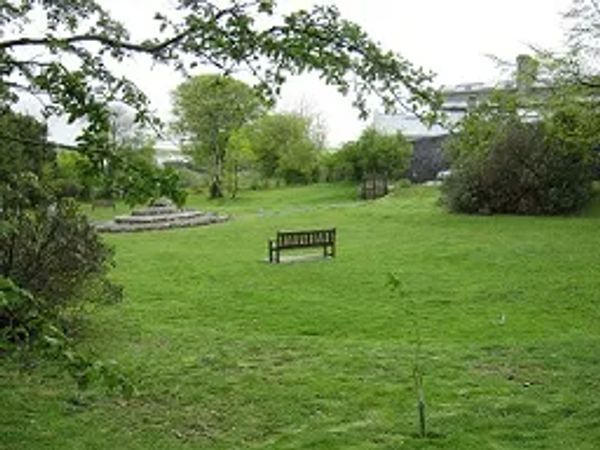19th Century - Libya, England, Canada, Spain
Tripoli, Libya 1804
Lt. Richard Somers and the crew of the USS Intrepid would become the first named Americans killed in combat and buried abroad.
It is believed that ten seamen were buried on the beach, and three officers were buried together on land above the beach. Known and possible reburials since 1804 have resulted in five unnamed Intrepid crew being buried in a Presbyterian cemetery near the beach and the belief that five crewmen are buried at one location under what is now Green Park. Richard Somers and two other officers are believed to be buried in another location beneath Green Park. MORE

Dartmoor Prison War of 1812
As the War of 1812 wore on, an increasing number of prisoners were moved to the large, dark prison a day’s forced march uphill and inland from Plymouth, near Princetown. Of its setting, one wrote, “This highland receives the sea mists and fogs, and they settle on our skins with a deadly dampness. This moor affords nothing for subsistence or pleasure. Rabbits cannot live on it. Birds fly from it, and it is inhabited, according to the belief of the most vulgar, by ghosts and demons; to which will doubtless be added, the troubled ghosts of American prisoners.” The interior of the prison was no better, dark and cold, overcrowded with men and sickness. Death was almost a daily occurrence. Beneath the lush lawn and park bench rest the bones of 271 named Americans. MORE

Deadman's Island Halifax, Nova Scotia
The cemetery for the notorious British prison at Melville Island holds 195 American soldiers and sailors of the War of 1812, while others are believed to buried at the Halifax Naval Hospital. The list of names was discovered late in the 20th century in the records of the British Admiralty in London and transmitted to the U.S. National Archive.
Go view the graves that prisoners fill
Go count them on the rising hill
No Monumental marble shows....
Whose silent dust does there repose
All sleep unknown; their bodies rot
By all, save distant friends, forgot.
Anon.
Plymouth, England 1813
Commander William H. Allen and Midshipman Richard Delphy, of the USS Argus, were buried in the south yard of St. Andrew’s Church on August 21, 1813. Reorganization of the church property in 1871 led either to a loss of knowledge of the burial site location or to anonymous reburial in the nearby Westwell Street Burial Ground. The tombstones of Allen and Delphy were recovered, however, and are now cemented into the doorway of the old St. Andrew’s Prysten House.

U.S. Naval Cemetery, Menorca, Spain
Created over the years of the mid-19th century, the cemetery at Port Mahon had deteriorated by the beginning of the 20th. Nobody seemed to own it, much less to have authority over its care. The British vice- consul in Port Mahon had attempted to gain that authority by default, but the passing years had further obscured its origins. The U.S. Navy continued to operate in its culture of looking forward rather than backward into its own history. Shown the cemetery by the vice-consul in 1928, VAdm. John H. Dayton found the graves dilapidated, their inscriptions fading away and irretrievable as wind, rain and sun broke down the stone. Dayton directed his aides to transcribe those inscriptions that could still be read. The visit appeared to be just in the nick of time. The inscriptions that remained were saved for history. As the cemetery threatened to fall into the sea in 1908, it was rescued and repaired by the Spanish Army.
Copyright © 2023 Foreign Burial - All Rights Reserved.
Powered by GoDaddy